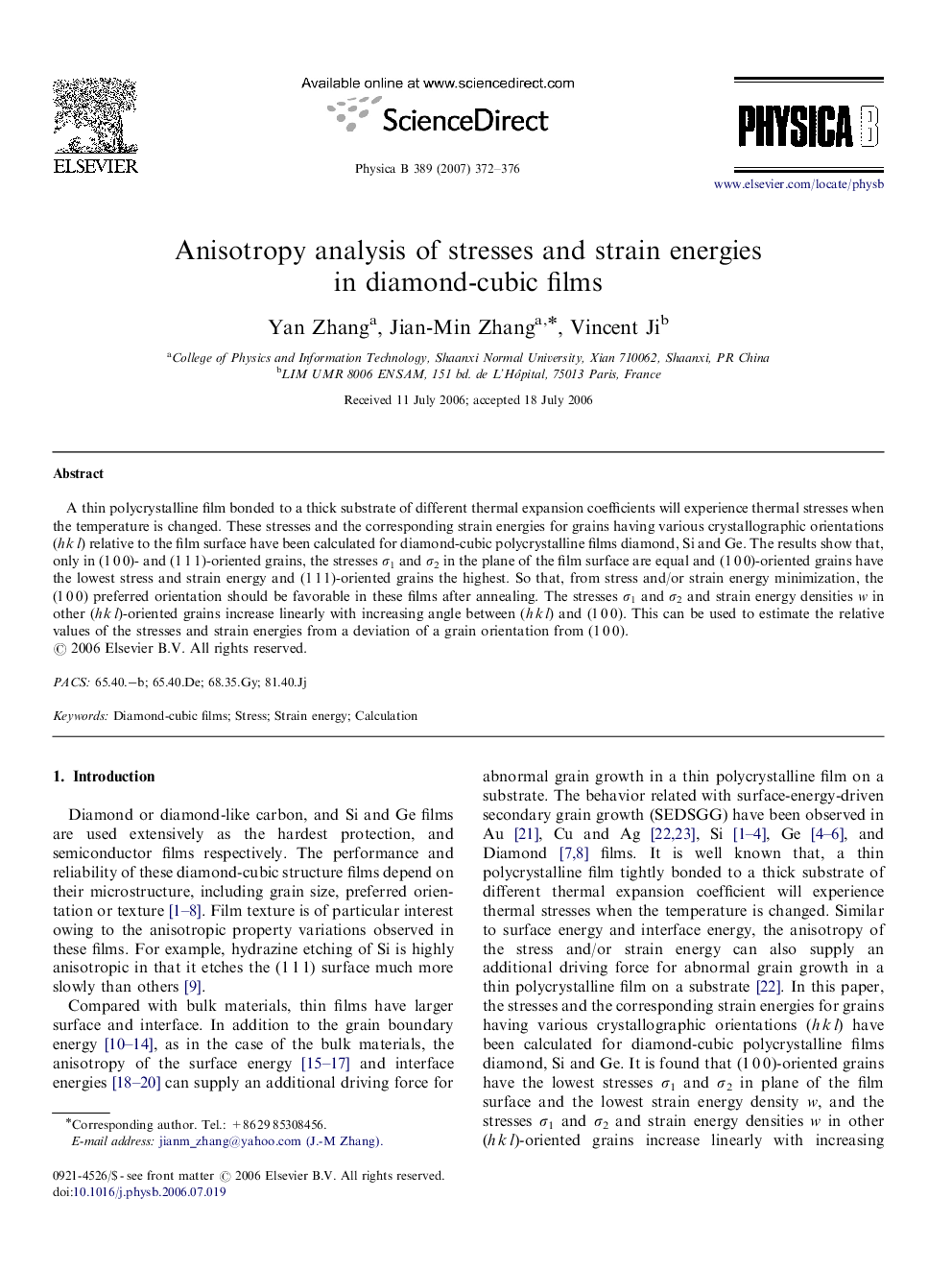| Article ID | Journal | Published Year | Pages | File Type |
|---|---|---|---|---|
| 1815623 | Physica B: Condensed Matter | 2007 | 5 Pages |
A thin polycrystalline film bonded to a thick substrate of different thermal expansion coefficients will experience thermal stresses when the temperature is changed. These stresses and the corresponding strain energies for grains having various crystallographic orientations (h k l) relative to the film surface have been calculated for diamond-cubic polycrystalline films diamond, Si and Ge. The results show that, only in (1 0 0)- and (1 1 1)-oriented grains, the stresses σ1 and σ2 in the plane of the film surface are equal and (1 0 0)-oriented grains have the lowest stress and strain energy and (1 1 1)-oriented grains the highest. So that, from stress and/or strain energy minimization, the (1 0 0) preferred orientation should be favorable in these films after annealing. The stresses σ1 and σ2 and strain energy densities w in other (h k l)-oriented grains increase linearly with increasing angle between (h k l) and (1 0 0). This can be used to estimate the relative values of the stresses and strain energies from a deviation of a grain orientation from (1 0 0).
